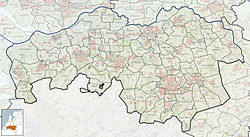
The Aa is a small river in the Netherlands. It rises near Nederweert in the southeastern province of Limburg, in the Peel region. It flows northwest through the province of North Brabant towards 's-Hertogenbosch, roughly along the Zuid-Willemsvaart canal. In 's-Hertogenbosch, at the confluence of the Aa and the Dommel, the river Dieze is formed, which flows into the Meuse a few km further. The main cities and towns along the Aa's course are Asten, Helmond, Veghel and 's-Hertogenbosch.

Heeswijk Castle is a moated castle near Heeswijk in the Dutch province of North Brabant.
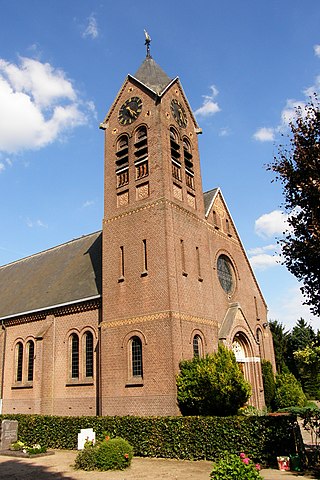
Nijnsel is a village in the province of North Brabant, located in the Meierij of 's-Hertogenbosch. Nijnsel is a parish of the municipality of Meierijstad.

Het Noordbrabants Museum is an art museum in 's-Hertogenbosch, Netherlands.

Oud Herlaer was a castle on the Dommel just east of Vught. All that remains is a farm which incorporates parts of the old castle. While not that much remains of the castle, there are a lot of recent studies about Oud Herlaer and its owners. The farm is planned to be opened as an art center in 2021. The name Oud Herlaer,, signifies that later on Nieuw-Herlaer Castle was built about 1 kilometer upstream.

Bokhoven Castle was a big defendable castle in Bokhoven, the Netherlands. A moat and part of the northern wall of the outer bailey are all that reminds of the castle.
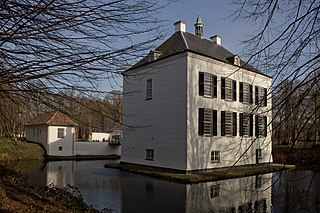
Loon op Zand Castle, is a castle in Loon op Zand, in the Dutch province of North Brabant. The current building looks like a manor, but is actually the keep of a medieval castle.

Meerwijk Castle is a Tudor Revival Style mansion on the east bank of the Dieze river just north of 's-Hertogenbosch. It was preceded by Meerwijk Manor, built on the same location.
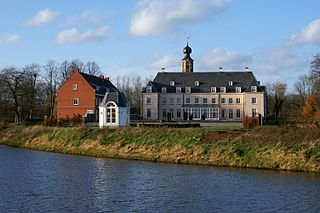
Nieuw-Herlaer Castle is a manor in Sint-Michielsgestel, the Netherlands. It contains a tower which was part of the preceding castle.

Empel en Meerwijk Castle was a medieval castle just north of 's-Hertogenbosch. All that's left is a terrain where the castle outlines have been visualized.

The Swan Brothers' House in 's-Hertogenbosch is a museum and the home of a famous medieval confraternity.
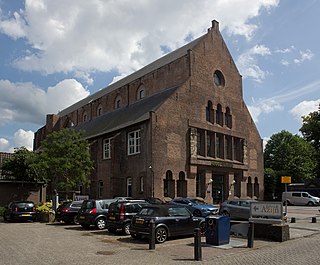
The Big Arsenal, in Dutch: Groot Tuighuis, in 's-Hertogenbosch, Netherlands, is also known as Old St. James Church, or Oude Sint Jacobskerk. It is the former location of the Noordbrabants Museum. It now houses the municipal heritage department and its storage. It is open to visitors four days a week.

The City Gymnasium of 's-Hertogenbosch is a grammar school, which is known as a gymnasium in the Netherlands. It is the second oldest school of the Netherlands.
Adriaan Harry John "Daan" de Kort is a Dutch politician of the conservative liberal People's Party for Freedom and Democracy (VVD). Born in Veldhoven, he served on that town's municipal council starting in 2014, and he became an alderman four years later. He was elected to the House of Representatives in the 2021 Dutch general election.

Engelen Lock is a lock with vertical-lift bridge in the Dieze Canal near Engelen, North Brabant, just before the canal exits into the Meuse.

Sint-Michielsgestel is a village in the municipality of Sint-Michielsgestel, Netherlands.

Tongelaar Castle is located between Mill and Gassel in North-Brabant, Netherlands.

Aldendriel Castle is late medieval castle in Mill, North-Brabant, Netherlands

Dussen Castle is a water castle that got its peculiar form after being destroyed by the St. Elizabeth's flood of 1421.

Hedel Bridge is a tied-arch bridge bridge over the Meuse dating from 1937 near Hedel, Gelderland. The bridge was built for the Oude Rijksweg, a former part of the A2 motorway that connected 's-Hertogenbosch to Utrecht.

